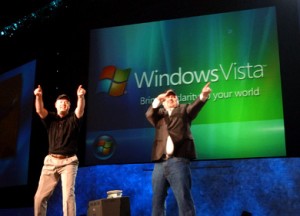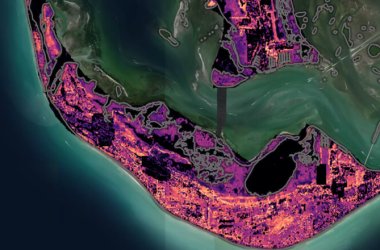Microsoft’s Windows 8 may be lagging far behind Windows 7 in its usage uptake, but it’s easily topping the low bar set by Windows Vista, according to data from Web metric firm Net Applications.
Windows 8 accounted for 0.45% of all computers running Windows during October, Net Applications noted earlier this month, five times less than Windows 7’s 2.33% for the same month three years ago.
Both operating systems were launched in the waning days of October, Windows 7 in 2009, Windows 8 in 2012.
Previously, Computerworld had been unable to compare Windows 8’s uptake to Windows Vista’s because it had started recording Net Applications’ data for the latter only February 2007, the first full month after that problem-plagued operating system’s launch.
Numbers recently unearthed on Net Applications’ website, however, now allow a head-to-head comparison for previous months.
By the end of January 2007 — Vista debuted Jan. 30 of that year — the then-new OS powered just 0.19% of all Windows systems, or less than half that of Windows 8 after its Oct. 26, 2012 release.
In the two prior months — November and December 2006, which was as far back as the Net Applications data went– Vista also struggled to draw users.
During those two months, Vista’s share of all versions of Windows was significantly lower than Windows 8’s: Vista accounted for 0.12% and 0.17% of all Windows-equipped PCs, half that of Windows 8 in the same pre-launch period.
Windows 8, however, had inherent advantages over Vista based on their respective launch months. First, Windows 8 debuted several days before the end of the month, giving it an opportunity to rack up users through its $40 upgrade and new PC purchases. And second, like Windows 7, this year’s upgrade made it to market before the critical holiday sales season kicked off.
Vista missed that market in 2006, one of many reasons cited for its slow start if not its ultimate failure, hitting retail as upgrades and on new PCs more than a month after Christmas.
But the trouncing of Vista may be little consolation to Microsoft when it compares Windows 8’s numbers to Windows 7’s. The latter started strong — its usage share was robust throughout its preview phase, unlike Windows 8 — and took off like a rocket after its launch.
By the end of March 2010, just five months after retail release, Windows 7 had snapped up more than 10% of all Windows machines. Vista needed 12 months to do the same.
Windows 8’s share should jump this month. While Net Applications won’t publish November’s data until Saturday, if Windows 8’s gains are similar to Vista’s and Windows 7’s, it should finish with a share between 1% and 2% for the month.
Early data aside, it’s impossible to predict whether Windows 8’s future will be more like Vista — which peaked at 20.3% of all Windows computers in October 2009 — or akin to Windows 7, which continues to gain usage share. At the end of October 2012, three years after its launch, Windows 7 accounted for 49% of all Windows-powered PCs.
Most analysts are forecasting a weak reception for Windows 8, blaming the poor global economy, the OS’s confusing dual user interfaces, enterprise upgrade fatigue after migrating from XP to Windows 7, and fierce competition from rivals’ tablets, including Apple’s iPad, Amazon’s Kindle Fire and Google’s Nexus lines.






